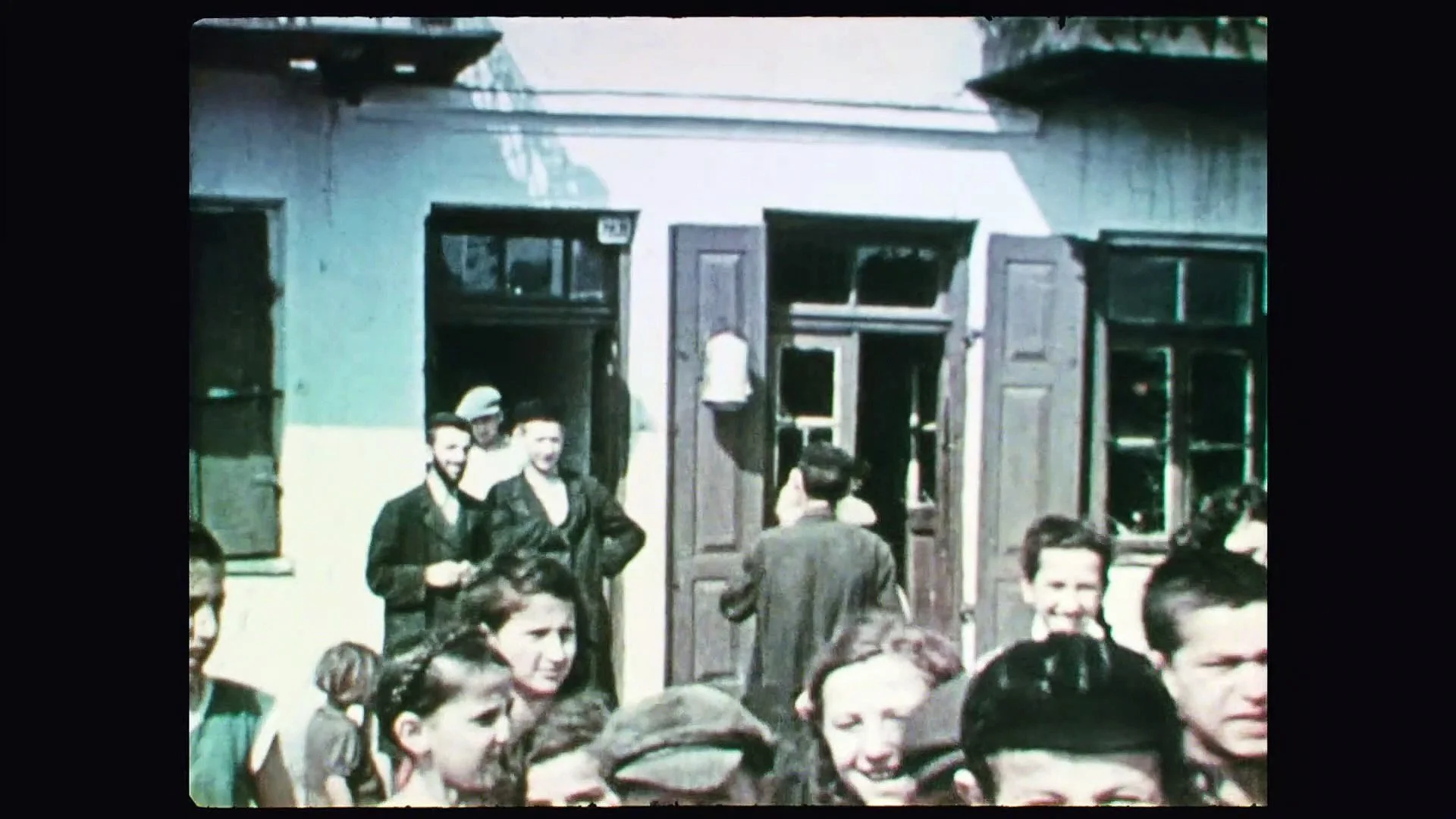Three Minutes: A Lengthening
Three minutes of film, shot in Poland in 1938, provides Bianca Stigter with a novel insight into the Holocaust.
There is certainly nothing new in making a film about the Holocaust but this feature by Bianca Stigter finds an approach that renders it different from anything that has preceded it. In 1938 David Kurtz set out from America to visit Europe and he incorporated into that trip a visit to the Polish town of Nasielsk. The reason for that was that he had family roots there and, having recently acquired a camera, he shot footage in this town’s main Jewish area. His film only lasted three minutes or so and he was an amateur, but the footage survived and it was unearthed in Florida in 2009. It is this old film, grainy as it is, that we see at the start of this documentary. No music accompanies it and the only sound heard is that of an old-style projector. What follows is a study of that film which has now been restored and is held today in the US Holocaust Memorial Museum.
If it is unexpected to find this 1938 film being made the focus of a new documentary, it is no less surprising to discover that Bianca Stigter has opted to add virtually no other visuals. Instead, she has elected to limit what we see to what David Kurtz shot but nevertheless to move back and forth over his images and to pick out details including many individual faces. As one would expect soundtrack voices are added and these are not limited to that of Helena Bonham Carter who aptly and very straightforwardly delivers the film’s spoken narration. Thus it is that Glenn Kurtz, the grandson of David Kurtz, is heard talking of the detective work that he undertook when the film came to light again. Initially he was not even certain in which town the filming had taken place, but he set out to discover that and also to find out anything that he could about the nameless people seen in his grandfather’s film. Fortunately, he was able to track down one of them, Maurice Chandler, who had been a young boy in 1938. He in turn is able to identify others in these images and talks about Nasielsk as his childhood home. His is a significant contribution. But, whereas most filmmakers would choose to shoot interview footage featuring the speakers including those additional ones who elaborate on the town and its Jewish community, here they feature only in voice-overs.
By taking that step the film is able to concentrate on the special value that historical film footage can have in preserving a moment in history and, in this case, in capturing a lost world. We see here a time when those in the film had no premonition of the horrors so soon to be unleashed on them and believed that theirs was a comfortable existence. Viewers looking back later on such material can from their own knowledge fill in the surrounding context even as the vivid faces on screen continue to look out at us as they live on in their own moment of time.
This documentary fascinatingly details the various steps taken in identifying as fully as possible what this old footage represents and late on it builds up a kind of memorial by gathering together the faces of all of those seen in the film in a single frame. Nevertheless, there are times when the film relies on the spoken information be it by way of reports or recollections in order to bring home essential facts. Only thus do we learn of the seizure of the town’s Jews in 1939 and their deportation which for most would lead to death in the camp at Treblinka. Indeed, the stark tragedy is brought home in a statistic that is quoted here: of Nasielsk’s 3000 Jewish residents no more than 100 survived.
When it comes to documentary films about the Holocaust, two of them at the very least - Alain Resnais’s Night and Fog and Claude Lanzmann’s Shoah - are exceptional in every respect. This documentary hardly belongs in that exalted company, but it is honest and heartfelt and its close look at what David Kurtz photographed gives an extra resonance to those faces that he captured on camera so long ago.
MANSEL STIMPSON
Featuring the voices of Glenn Kurtz, Maurice Chandler, Andrzej Lubieniecki, Zdzisław Suwinski, Katarzyna Kacprzak, Evelyn Rosen-Chandler, Marcy Rosen, and Helena Bonham Carter as narrator.
Dir Bianca Stigter, Pro Floor Onrust and Steve McQueen, Screenplay Bianca Stigter, from the book Three Minutes in Poland: Discovering a Lost World by Glenn Kurtz, Ph David Kurtz, Ed Katharina Wartena, Music Wilko Stark.
Family Affair Films/Lammas Park-Curzon.
69 mins. Netherlands/UK. 2021. US Rel: 19 August 2022. UK Rel: 2 December 2022. Cert. 12A.


